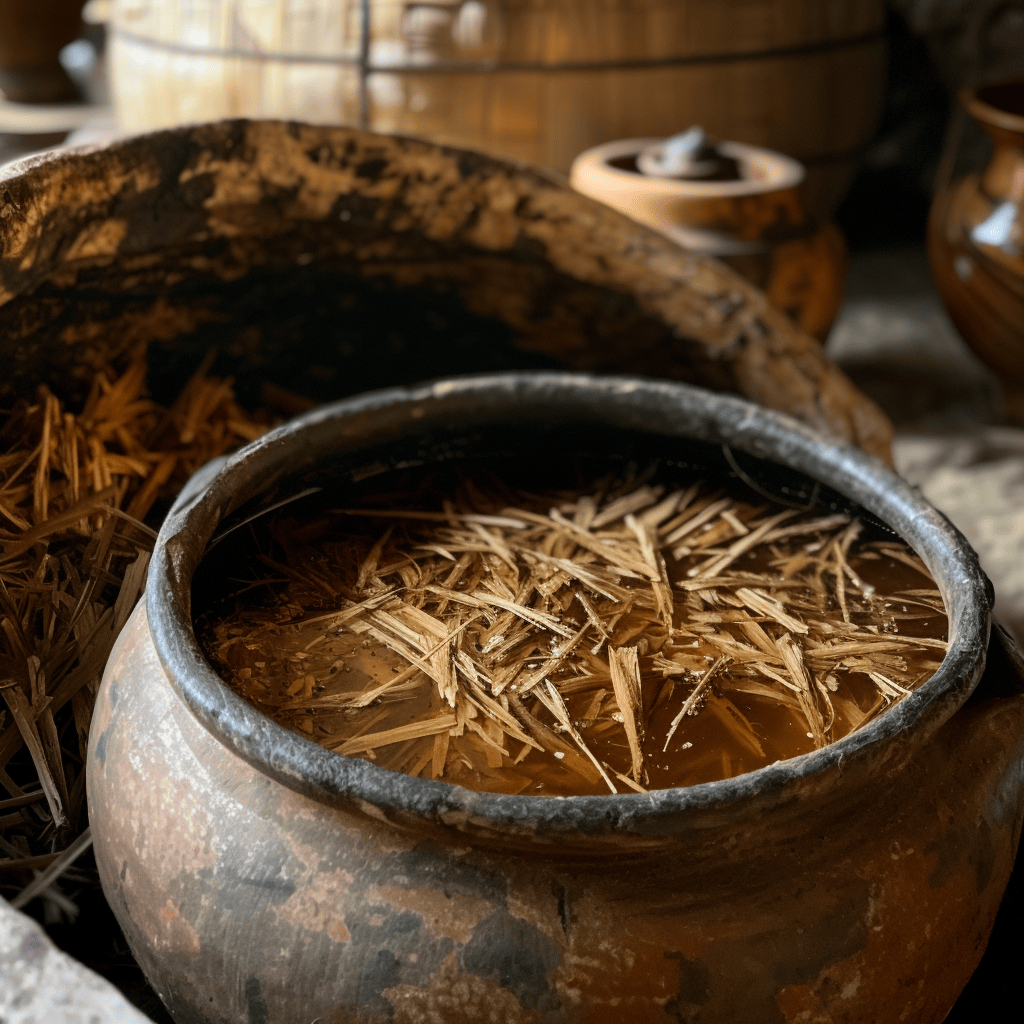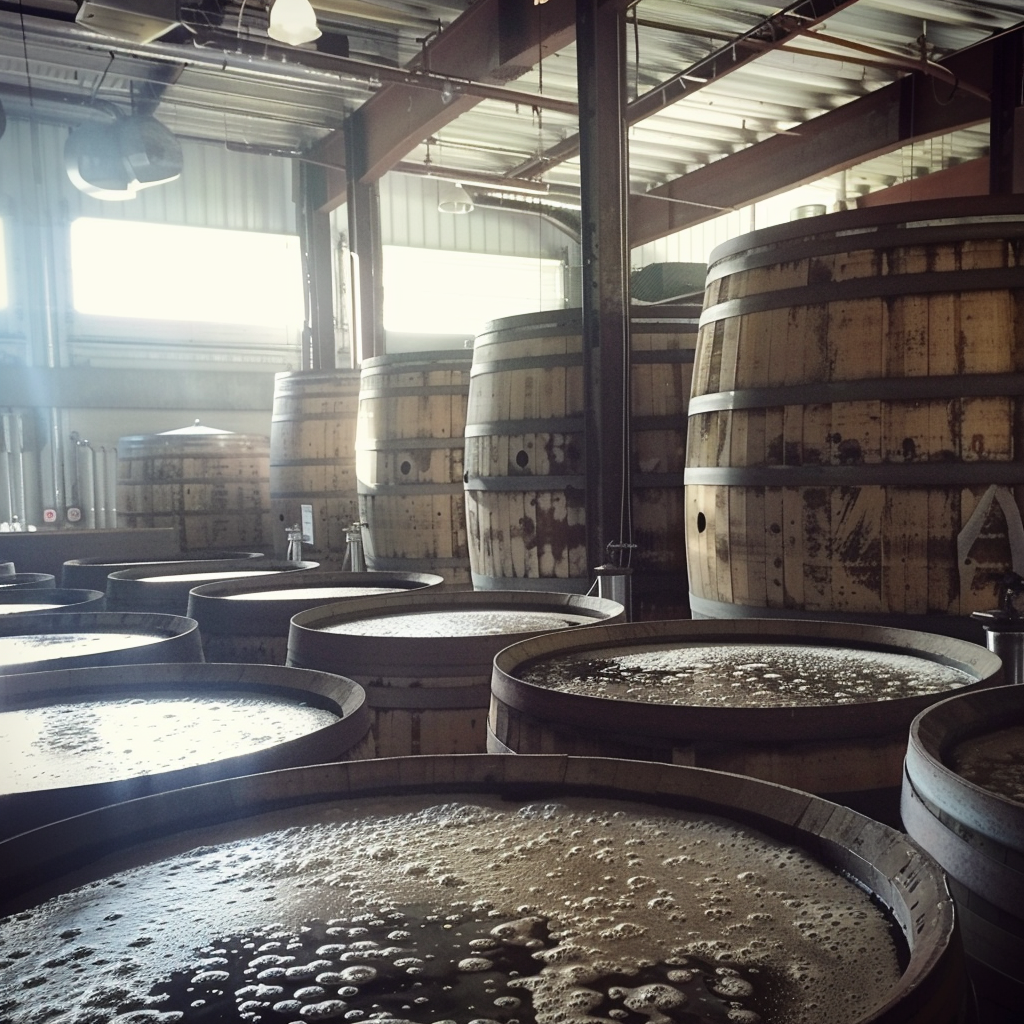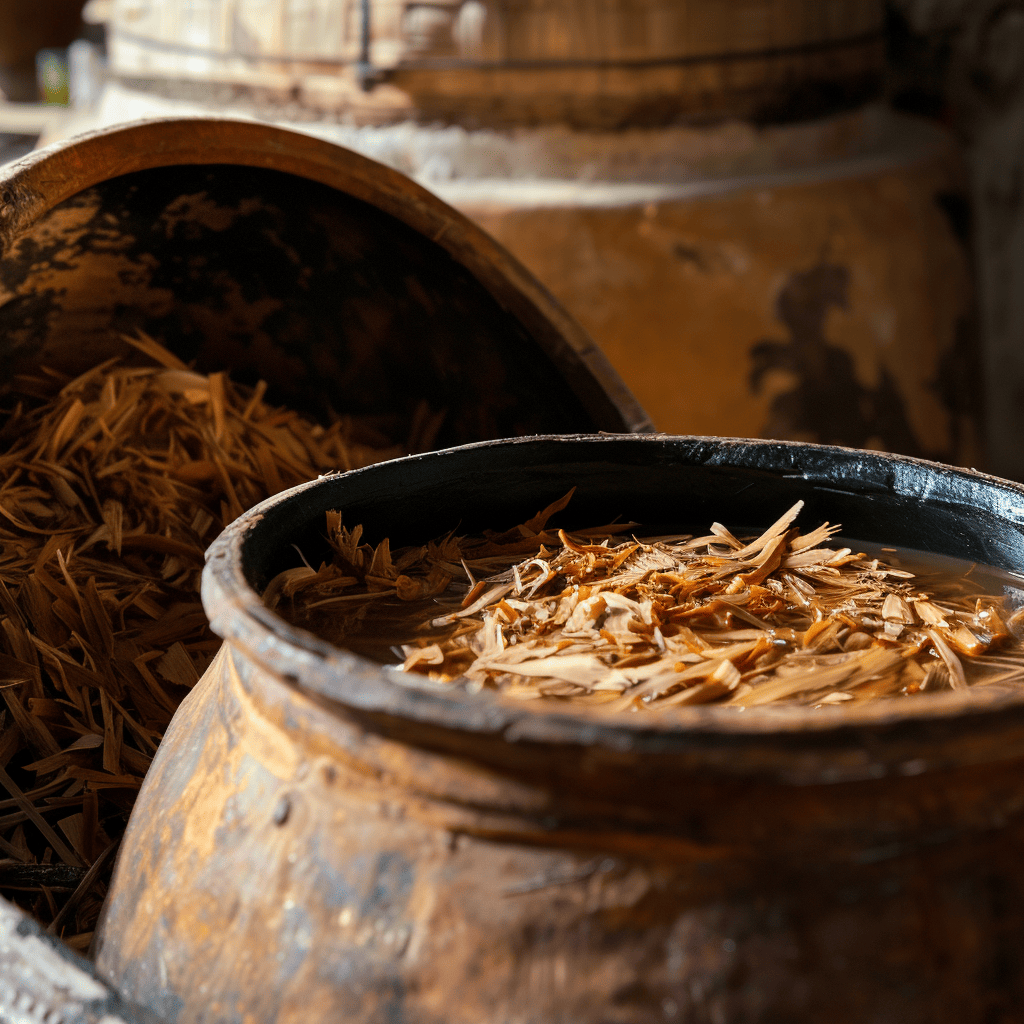Mezcal Fermentation
Fermentation plays a pivotal role in the art of mezcal production. It transforms the sugars in cooked agave into alcohol while crafting the aromatic compounds that give mezcal distinctive flavors and aromas. This natural process is influenced by a delicate interplay of environmental factors, microorganisms, and traditional techniques, making fermentation one of the most fascinating stages in mezcal production.
Fermentation: A Mystic and Scientific Process
Despite advancements in science, the fermentation process retains an air of mystery. The microorganisms responsible for fermentation are partially understood, leading many to view the process as divine or mystical.

A Spiritual Connection
Master mezcaleros often intertwine the fermentation process with their spiritual beliefs, creating a rich tapestry of tradition and craftsmanship. It is not uncommon to find Catholic crosses placed in fermentation vats, symbolizing a gesture of faith and invoking divine assistance during this crucial production stage. This practice underscores the spiritual dimension of mezcal crafting and reflects a broader cultural worldview that sees human effort as intrinsically linked with the natural world. The artistry involved in mezcal production is deepened by this reverence, where each step is treated as a labor of love and a sacred ritual. The intertwining of spirituality and craftsmanship enriches the experience of creating this iconic spirit. It fosters a sense of community among mezcaleros, who share a collective respect for the earth and its gifts. Through this process, they uphold the belief that every bottle of mezcal carries the flavors of the agave and the stories and spiritual essence of those who crafted it.
The Science of Fermentation
Scientifically, fermentation is driven by a combination of yeasts and environmental bacteria:
- Chemical Yeasts: While faster, chemical yeasts may reduce mezcal’s aromatic complexity.
- Natural (Wild) Yeasts: These yeasts take longer, resulting in a richer, more diverse flavor profile. They are often preferred in traditional mezcal production for their nuanced impact on the spirit.
Studies reveal that mezcal from Oaxaca boasts the most diverse yeast microbiome in Mexico, with up to 33 unique species, showcasing the influence of regional biodiversity on flavor.
Fermentation’s Role in Mezcal Excellence
Fermentation is more than a technical step; it combines art, science, and tradition. The process shapes mezcal’s alcohol content, flavor profile, and aroma, making it a defining element in the spirit’s production.
Whether driven by wild yeasts in open-air vats or influenced by environmental conditions, fermentation reflects the craftsmanship and dedication of mezcaleros.
Key Factors Influencing Fermentation
Multiple factors may influence the fermentation of mezcal. Here are some of the most prominent:
Agave Selection and Preparation
Microbial ecosystems, including wild yeast and bacteria, play a key role in shaping the flavors and aromas of mezcal. During fermentation, these microorganisms produce compounds that enhance the spirit’s complexity. Wild yeasts convert agave sugars into alcohol and volatile compounds, while lactic acid bacteria contribute acidity and additional flavors. Factors like temperature, humidity, and agave variety lead to diverse profiles. Each producer’s fermentation technique reflects local conditions, resulting in a mezcal that embodies its terroir, highlighting the connection between nature and craftsmanship.
Environmental Conditions
The type of agave used in production critically influences the fermentation outcomes of the final product, affecting both flavor profiles and alcohol content. Different agave varieties have unique characteristics, while the roasting and mashing methods significantly impact sugar availability and acidity levels. Temperature and duration of roasting can alter caramelization, affecting taste and sweetness. Understanding these factors is essential for producers to achieve the desired flavors and qualities in agave-based beverages.
Microbial Activity
Microbial ecosystems, consisting of wild yeast and bacteria, are essential in shaping mezcal’s unique flavors and aromas. During fermentation, these microorganisms produce compounds that enhance the spirit’s complexity. Wild yeasts convert agave sugars into alcohol and volatile compounds, while lactic acid bacteria add subtle acidity and flavor notes. Factors like temperature, humidity, and agave variety influence this intricate process, leading to diverse flavor profiles. Each producer’s approach to fermentation reflects local conditions, resulting in a mezcal that embodies its terroir, showcasing the intricate relationship between nature and craftsmanship in this distinctive beverage.
Environmental Impact and Sustainability
Sustainability is increasingly essential in mezcal fermentation:
- Traditional Methods: Open-air fermentation supports biodiversity by interacting with local yeasts and bacteria.
- Temperature Control: Natural cooling methods reduce energy consumption while maintaining optimal conditions.
- Acidity Monitoring: Ensuring balanced microbial activity contributes to consistent quality without chemical additives.

Types of Fermentation in Mezcal
Different fermentation processes contribute to mezcal’s unique character, affecting its aroma and taste.
Alcoholic Fermentation
Alcoholic fermentation is an anaerobic process that transforms sugars into alcohol. It plays a crucial role in the production of beverages like mezcal. This fermentation occurs without oxygen and generates the alcohol content that forms the foundation of mezcal.
Lactic Fermentation
Lactic fermentation is an anaerobic process that transforms glucose into lactic acid, lactate, and diacetyl. This transformation reduces acidity sensations, creates a creamy mouthfeel, and introduces buttery flavors to the final product.
Acetic Fermentation
Acetobacter bacteria play a crucial role in the aerobic process of transforming alcohol into acetic acid, which significantly impacts the flavor profile of mezcal by introducing vinegary or sour notes that add complexity to the spirit.
Each type of fermentation adds unique layers to mezcal’s flavor profile, making it a genuinely artisanal spirit.
The Two Stages of Fermentation
Fermentation occurs in two primary stages, each contributing to mezcal’s development:
Yeast Reproduction
- Process: Natural or added yeasts multiply once water is added to the cooked agave vats.
- Timeframe: This stage typically takes 1-2 days, depending on weather and temperature.
- Significance: Yeast reproduction sets the foundation for sugar consumption by creating an active and thriving microbial environment.
Sugar Consumption
- Process: During this stage, the yeast consumes sugars such as fructose and glucose, producing alcohol, heat, and carbon dioxide.
- Timeframe: This phase lasts 2-4 days and is characterized by constant bubbling, signaling active fermentation.
- Result: Alcohol and unique aromatic compounds are created, giving mezcal its signature character.

The Role of Acidity in Fermentation
Acidity is a defining factor in mezcal’s flavor, contributing to its complexity and balance. During fermentation, acids such as acetic, lactic, and malic acids develop, each bringing unique characteristics to the spirit:
- Acetic Acid: Adds sour or vinegary notes.
- Lactic Acid: Contributes creaminess and reduces sharpness.
- Malic Acid: Imparts fruity undertones, enhancing mezcal’s brightness.
Master mezcaleros carefully manage acidity during fermentation to ensure a harmonious balance of flavors.
Enhancing Flavor Through Acidity Management
By controlling acidity during fermentation, producers can shape mezcal’s flavor and texture:
- Earthy and Smoky Notes: Balanced acidity enhances these signature mezcal flavors.
- Fruity and Bright Undertones: Carefully managed acids add vibrancy to the spirit.
- Creamy and Buttery Textures: Lactic fermentation provides a rich mouthfeel.